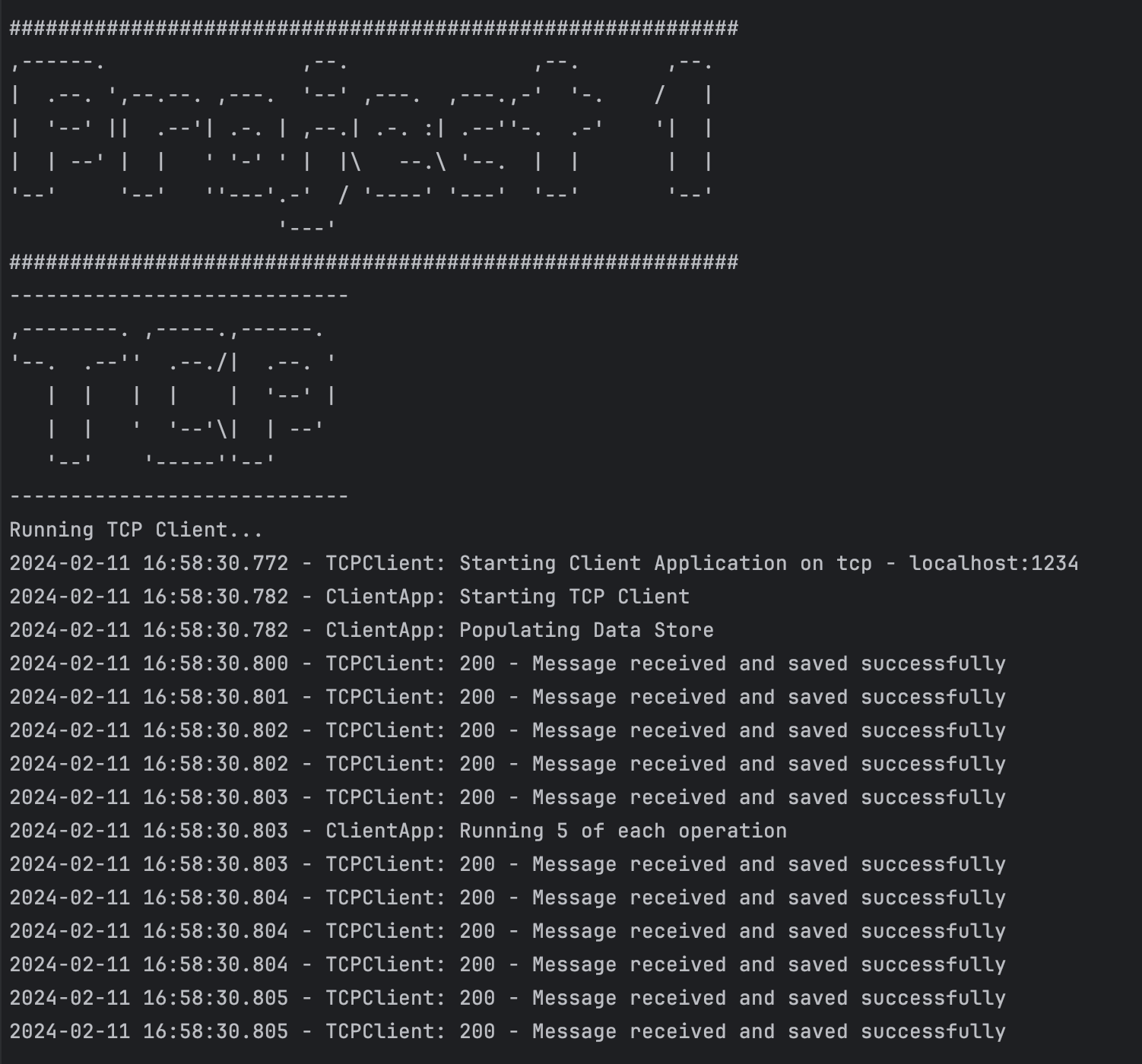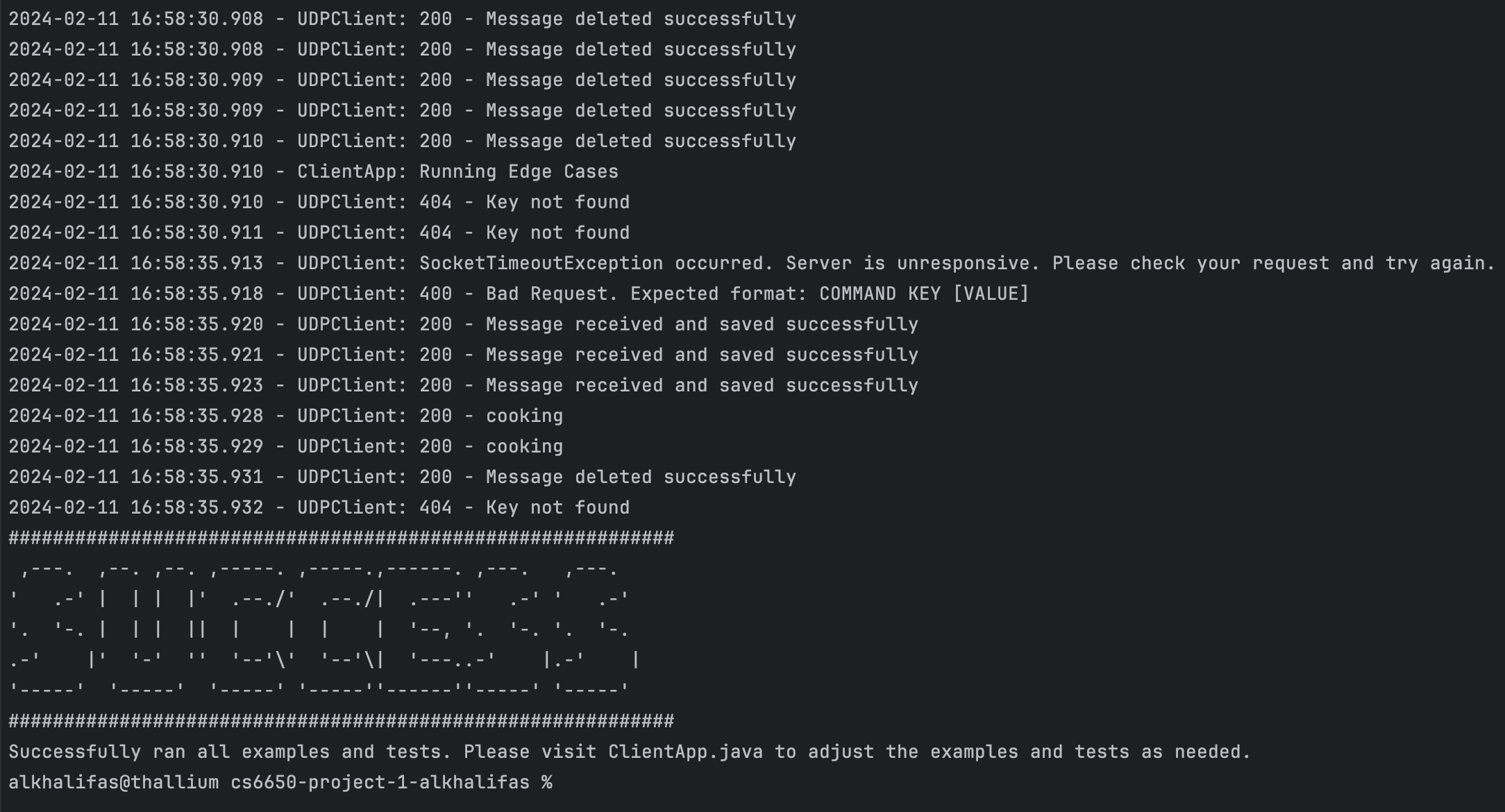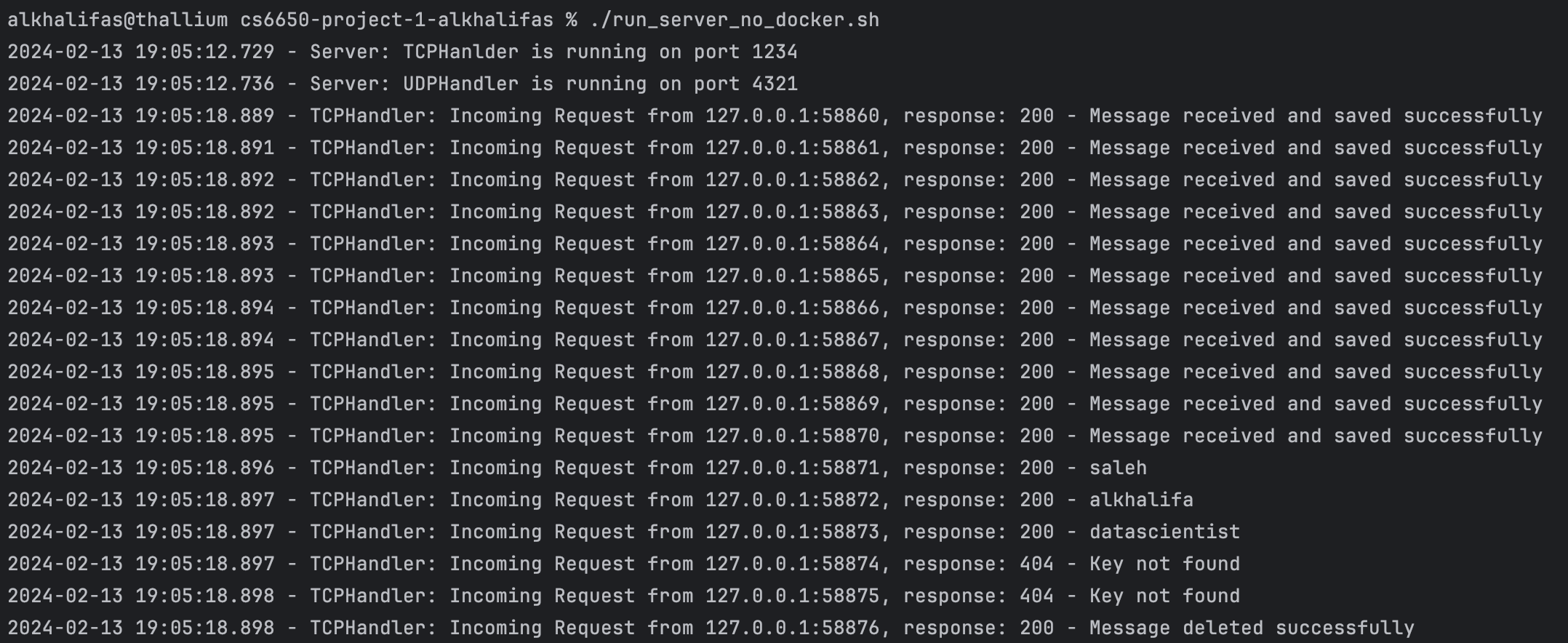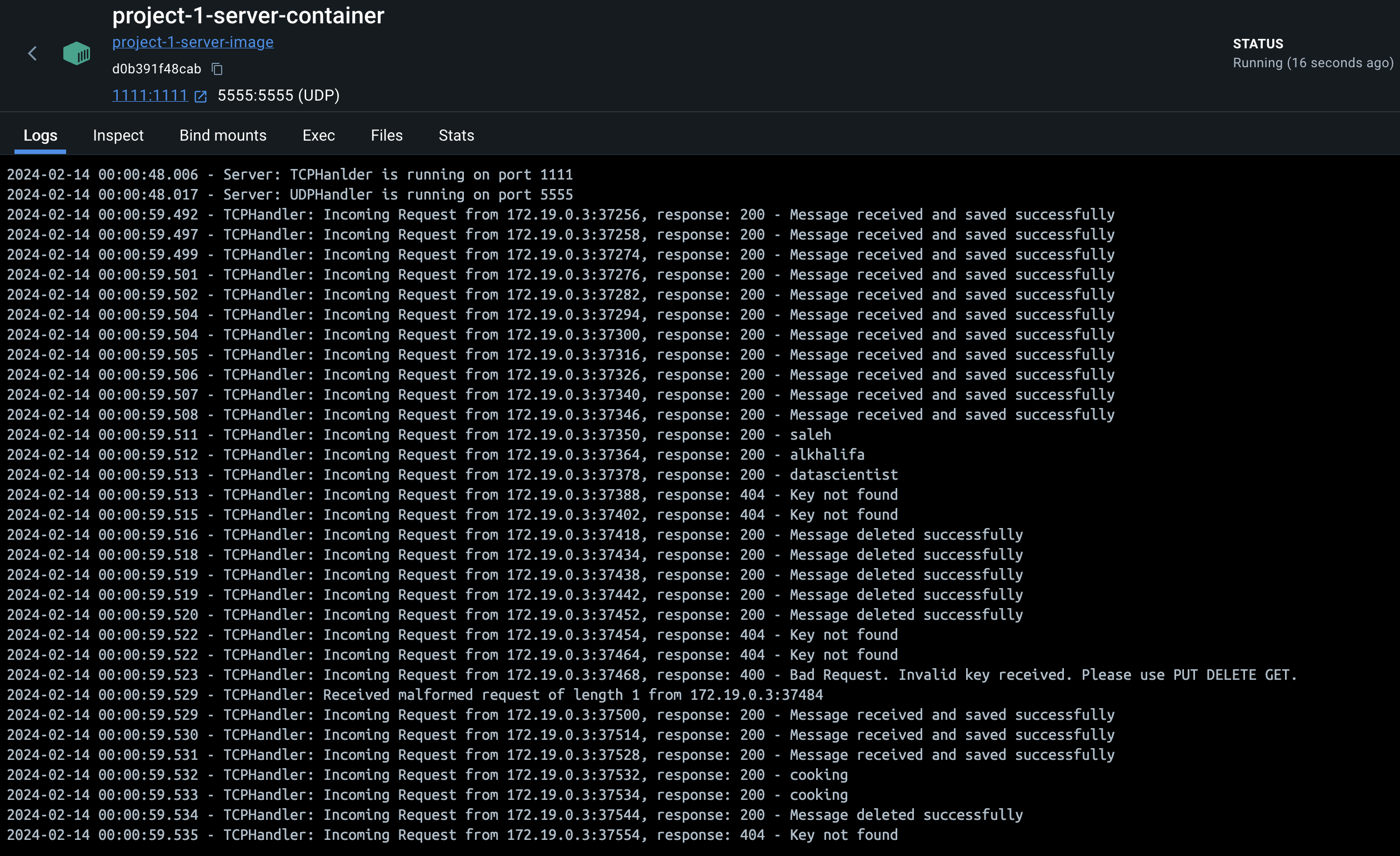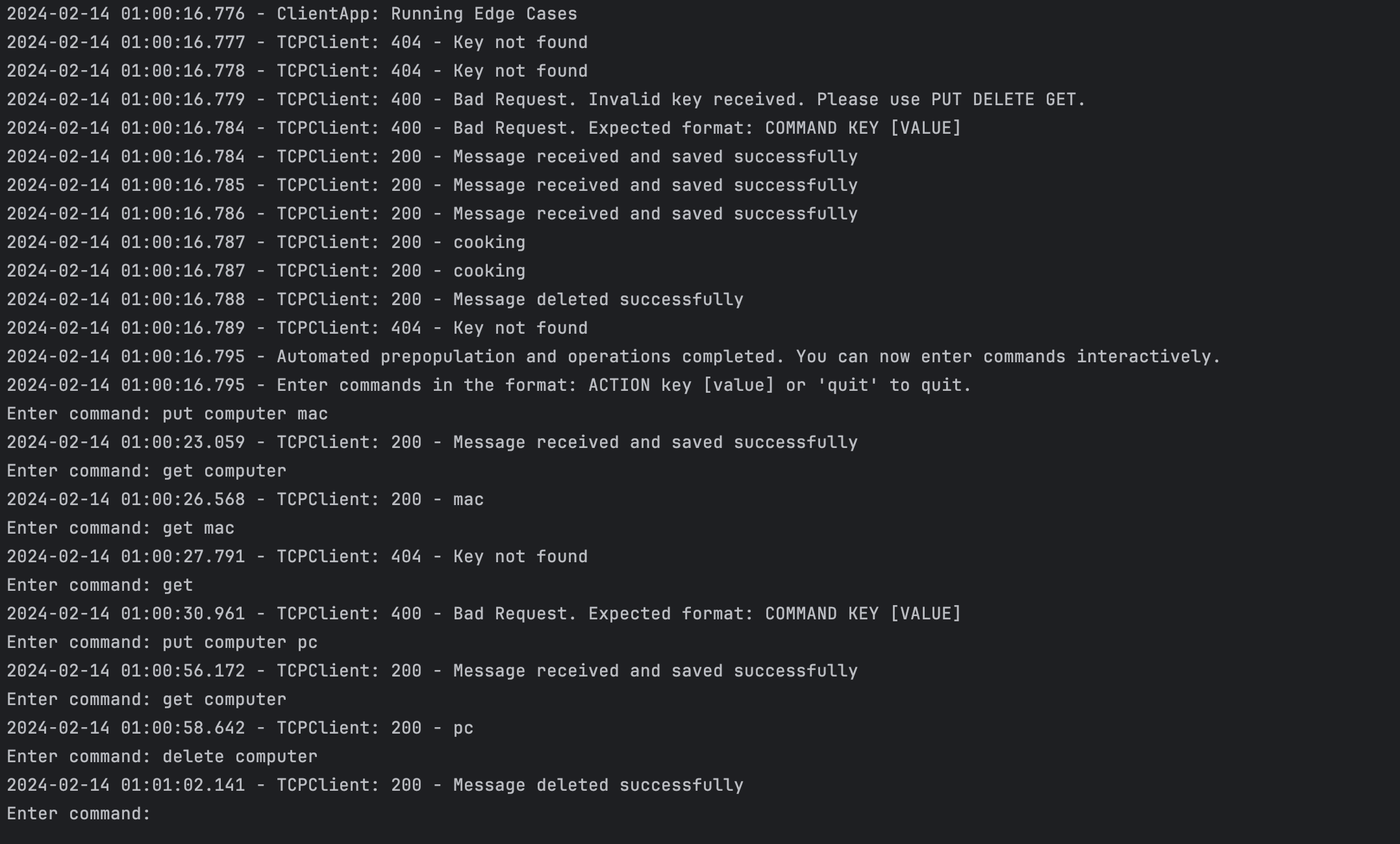- Make the client interactive
- Docker is optional, but not required
- Follow directory structure from guidelines
- Create a run_client.sh file
- You must also use two distinct L4 communication protocols
- Your implementation may be written in Java
- Your source code should be well-factored and well-commented.
- The client must take the following command line arguments hostname/IP and Port and protocol
- The client should be robust to server failure by using a timeout mechanism
- if it does not receive a response to a particular request, you should note it in a client log and send the remaining requests
- You will have to design a simple protocol to communicate packet contents
- Three request types along with data passed along as part of the requests
- The client must be robust to malformed or unrequested datagram packets
- If it receives such a datagram packet, it should report it in a human-readable way
- Every line the client prints to the client log should be time-stamped with the current system time
- You may format the time any way you like as long as your output maintains millisecond precision
- You must have two instances of your client (or two separate clients)
- The server must take the following command line arguments: port numbers for TCP and UDP
- The server should run forever (until forcibly killed by an external signal, such as a Control-C
- The server must display the requests received, and its responses, both in a human readable
- that is, it must explicitly print to the server log that it received a query from a particular InetAddress and port number
- The server must be robust to malformed datagram packets
- If it receives a malformed datagram packet, it should report it in a human-readable way (length + address:port)
- Every line the server prints to standard output or standard error must be time-stamped with the current system time (i.e., System.currentTimeMillis()).
- You may format the time any way you like as long as your output maintains millisecond precision
- You must have two instances of your server (or two separate servers)
- You should use your client to pre-populate the Key-Value store with data and a set of keys.
- Once the key-value store is populated, your client must do at least five of each operation: 5 PUTs, 5 GETs, 5 DELETEs.
- Create an executive summary comprising “Assignment overview”, “technical impression”, and three use cases to apply this in practice.
- “Assignment overview” (1 paragraph, up to about 250 words) explaining what you understand to be the purpose and scope of the assignment
- “technical impression” (1–2 paragraphs, about 200–500 words) describing your experiences while carrying out the assignment.
- Provide a use case (application) 3 where you would apply this in practice.
- Attach screenshots of your testing done on your local environment.
There are three methods to run the code for your convenience.
Compile the Java code:
cd src
javac server/*.java client/*.java
Run the Server:
cd src
java server.ServerApp 1234 4321
Run the Client:
cd src
java client.ClientApp localhost 1234 tcp
java client.ClientApp localhost 4321 udp
Alternatively, you can run the .sh files instead:
chmod +x run_server_no_docker.sh
./run_server_no_docker.sh
chmod +x run_client_no_docker.sh
./run_client_no_docker.sh
cd src
sudo ./deploy.sh
sudo docker build -t project-1-client-image --target client-build .
sudo ./run_client.sh project-1-client-container 1111 tcp
sudo ./run_client.sh project-1-client-container 5555 udp

